A uniform wire of resistance per unit length λ is bent into semicircle of radius a. The wire rotates with angular velocity ω in a vertical plane about a orizontal is passing through C. A uniform magnetic field B exists in space in a direction perpendicular to paper inwards.
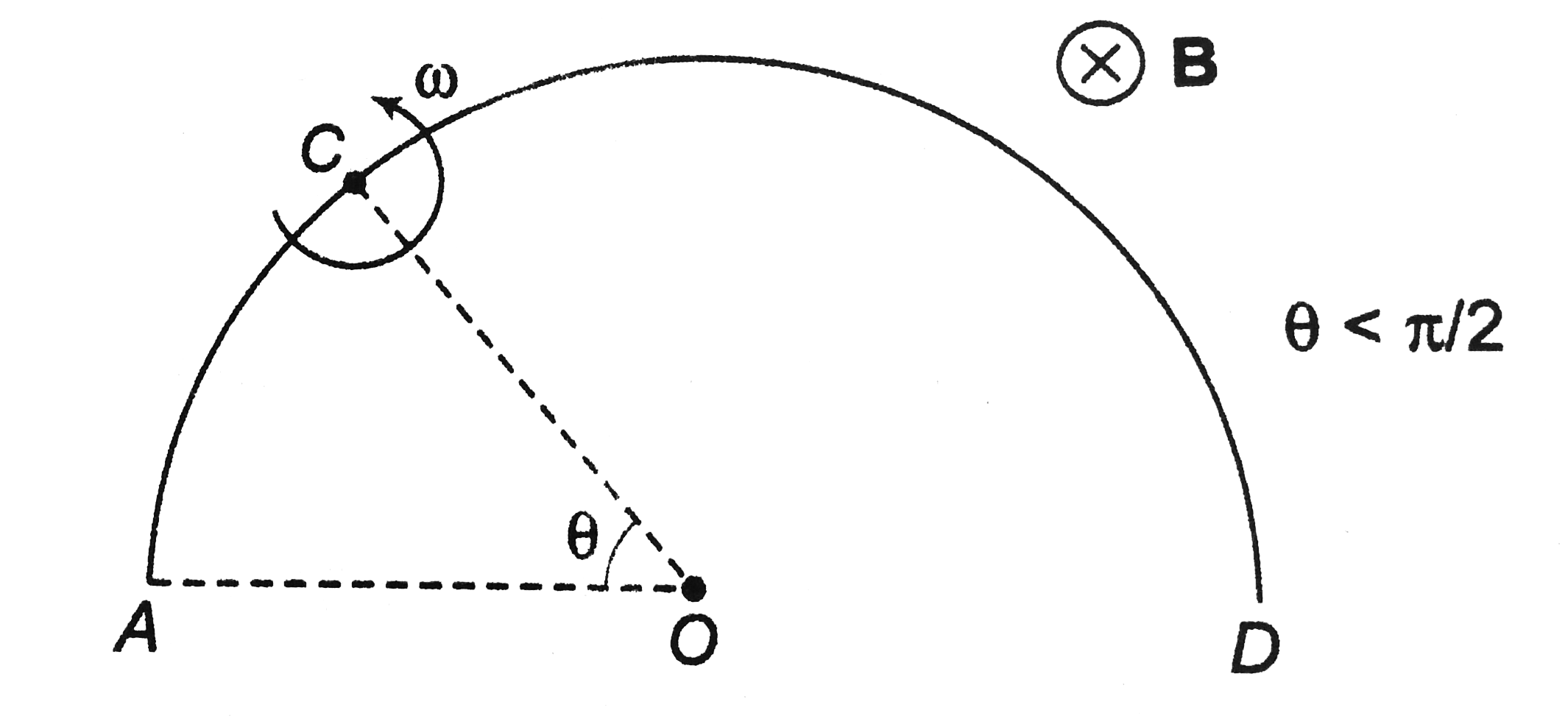
a. Calculate potential difference between points A and D. which point is at higher potential?
b. If points A and D are connected by a conducting wire of zero resistance, find the potential difference between A and C.
a. Length of straight wire AC is l1=2asin(θ2)

Therefore, the motional emf (or potential difference) between points C and A is
VCA=VC−VA=12Bωl21=2a2Bωsin2(θ2) ..(i)
From right hand rule, we can see that VC>VA
Similarly length of straight wire CD is
l2=2asin(π2−θ2)=2cos(θ2)
Therefore the PD between points C and D is
VCD=VC−VD=12Bωl22=2α2Bωcos2(θ2) ...(ii)
with VC>VD
Eq. (ii) -Eq.(i) gives
VA−VD=2a2Bω(cos2(θ)2−sin2(θ)2)
=2a2Bωcosθ
A is at higher potential.
(b) When A and D are connected from a wire current starts flowing in the circuit as shown in figure:
Resistance between A and C is r1=(length of are AC ) λ=aθλ
and between C and D is r2=(length of are CD) lambda=(pi-theta)alambda<br><imga≤ocr_imageload∈g=lazysrc=https://d10lpgp6xz60nq.cloudfront.net/physics_images/DCP_V04_C27_S01_045_S02.pngwh=80%mx-autosty≤=background:white;><br>InthefigureE_1=2^2Bomegasin(theta/2)andE_2=2a^2Bomgacos^2(theta/2)<br>withE_2gtE_1<br>:.Current∈the∘uitis<br>i=(E_2-E_1)/(r_1+r_2)=(2a^2Bomegacostheta)/(pi a lambda)=(2aBomegacostheta)/(pi lambda)<br>andpotentiald⇔erencebetweenp∮sCandAis<br>V'_(CA) =E_1+ir_1=2a^2Bomegasin^2(theta/2)+((2aBomegacostheta)/(pi lambda))(athetalambda)<br>=2a^2Bomega(sin^2theta/2+theta/picostheta)
Topper's Solved these Questions
- ELECTROMAGNETIC INDUCTIONBOOK - DC PANDEYCHAPTER - ELECTROMAGNETIC INDUCTIONEXERCISE - Exercise 27.1
8 Videos
- ELECTROMAGNETIC INDUCTIONBOOK - DC PANDEYCHAPTER - ELECTROMAGNETIC INDUCTIONEXERCISE - Exercise 27.2
4 Videos
- ELECTROMAGNETIC INDUCTIONBOOK - DC PANDEYCHAPTER - ELECTROMAGNETIC INDUCTIONEXERCISE - Example Type 6
3 Videos
- CURRENT ELECTRICITYBOOK - DC PANDEYCHAPTER - CURRENT ELECTRICITYEXERCISE - Medical entrances gallery
97 Videos
- ELECTROMAGNETIC WAVESBOOK - DC PANDEYCHAPTER - ELECTROMAGNETIC WAVESEXERCISE - Sec C
22 Videos
Similar Questions
A uniform wire of length l and mass M is bent in the shape of a semicircle of radius r as shown in figure. Calculate moment of intertia about the axis XX'
View SolutionFind the potential difference between the points a and b. If the points a and b are joined by a resistance of 5Ω, calculate the current through this resistance.
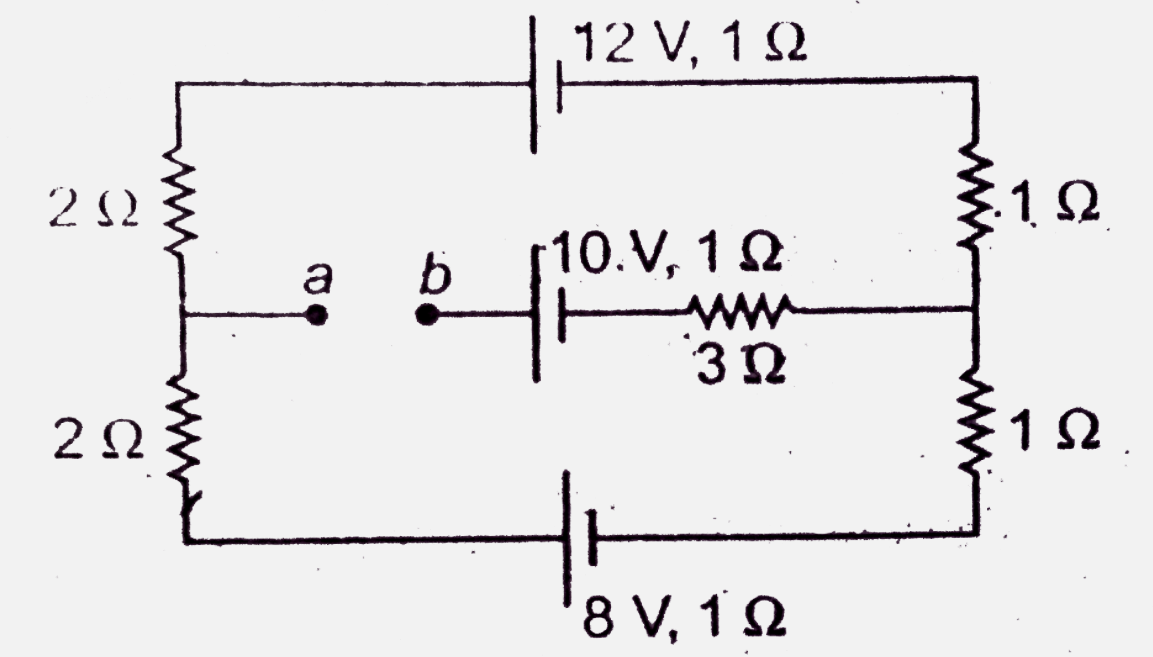
View Solution
Knowledge Check
The potential difference between points A and B in the given uniform electricl field is :
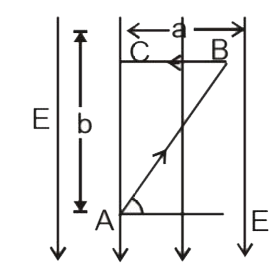 AEaBE√(a2+b2)CEbD(Eb/√2)
AEaBE√(a2+b2)CEbD(Eb/√2)A uniform wire of resistance 18Ω is bent in the form of a circle. The effective resistance across the points a and b is
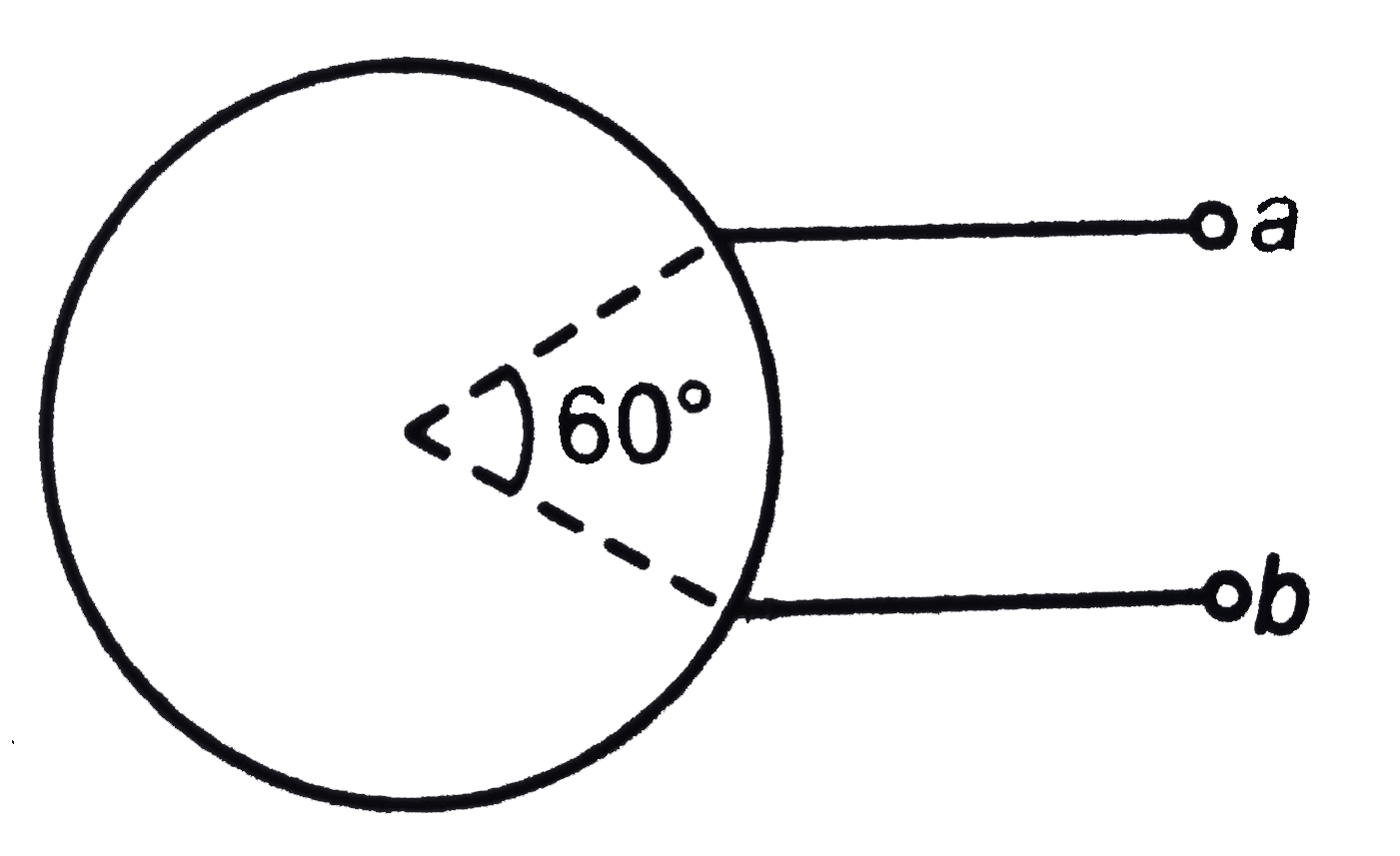 A3ΩB2ΩC2.5ΩD6Ω
A3ΩB2ΩC2.5ΩD6ΩA uniform wire of resistance 36Ω is bent in the form of a circle. The effective resistance across the points A and B is
 A5ΩB15ΩC7.2ΩD30Ω
A5ΩB15ΩC7.2ΩD30Ω
A rod of length l rotates with a small but uniform angular velocity ω about its perpendicular bisector. A uniform magnetic field B exists parallel to the axis of rotation. The potential difference between the centre of the rod and an end is
View SolutionA wire is bent to form a semi-circle of radius a. The wire rotates about its one end with angular velocity ω. Axis of rotation being perpendicular to plane of the semicircle. In the space, a uniform magnetic field of induction exists along the axis of rotation as shown. The correct statement is
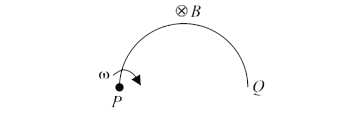
View SolutionA conducting rod rotates with a constant angular velocity 'ω' about the axis which passes through point 'O' and perpendicular to its length . A uniform magnetic field 'B' exists parallel to the axis of the rotation . Then potential difference between the two ends of the rod is :-

View SolutionA wire shaped as a semicircle of radius a, is rotating about an acis PQ with a constant angular velocity ω=1√LC, with the help of an external agent. A uniform magnetic field B exists in space and is directed into the plane of the figure. (circuit part remains at rest) (left part is at rest)
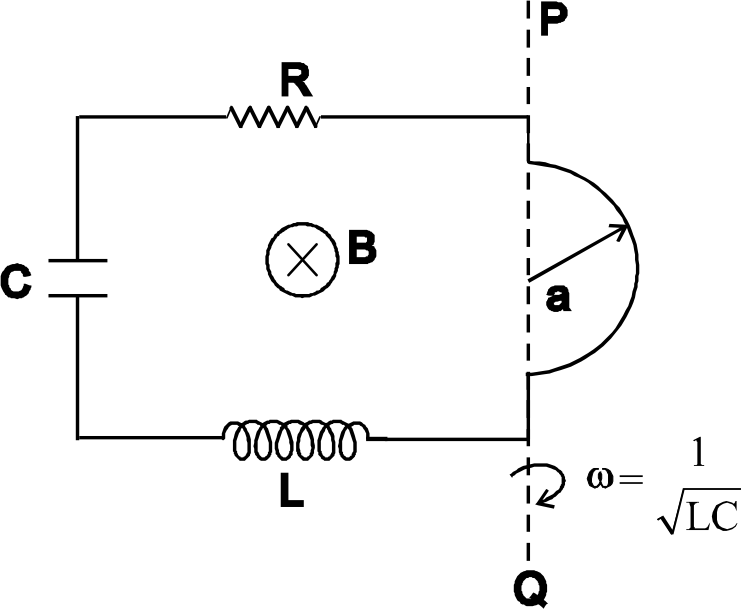
View SolutionThe loop shown moves with a velocity v in a uniform magnetic field of magnitude B, directed into the paper. The potential differene between point P and Q is e. Then
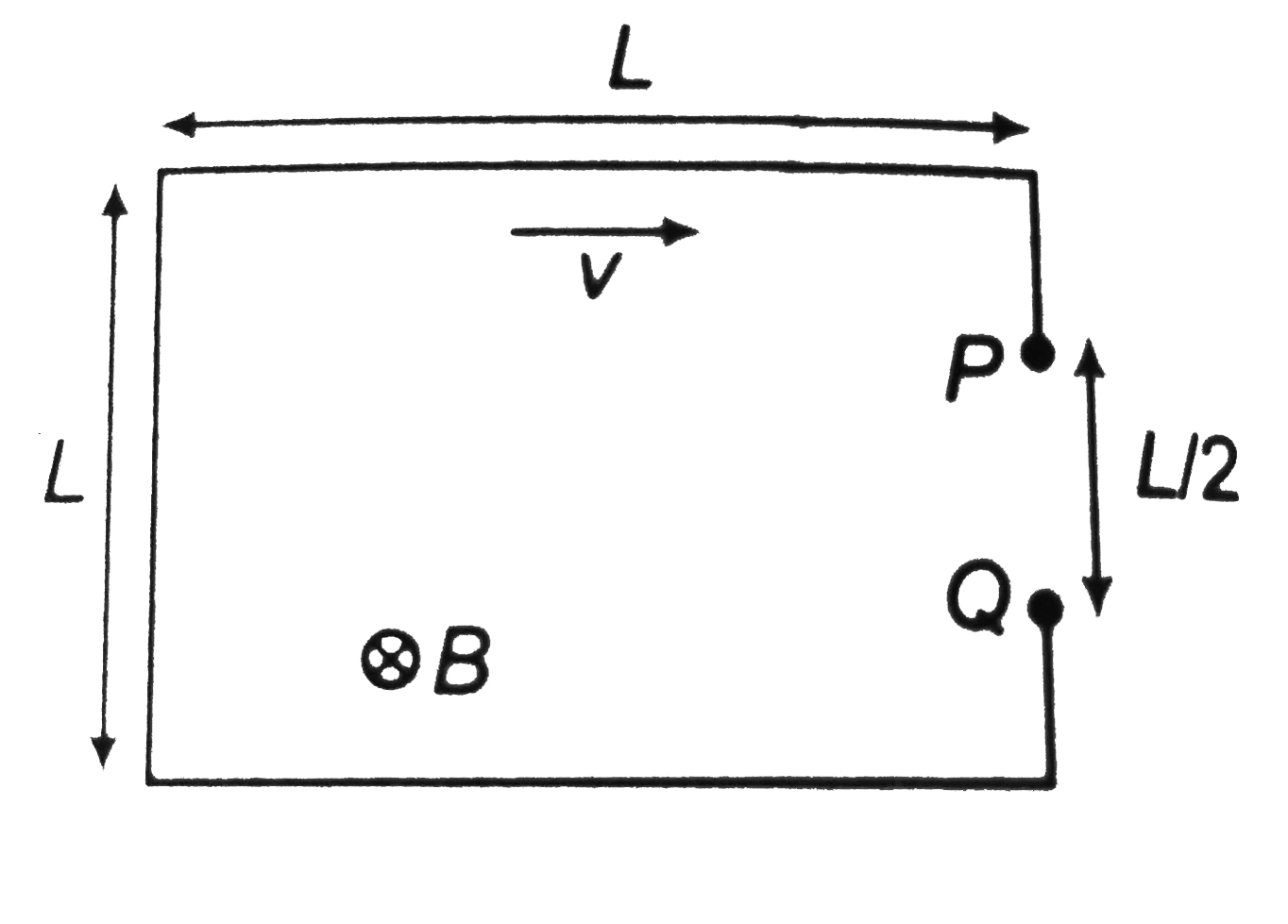
View Solution
